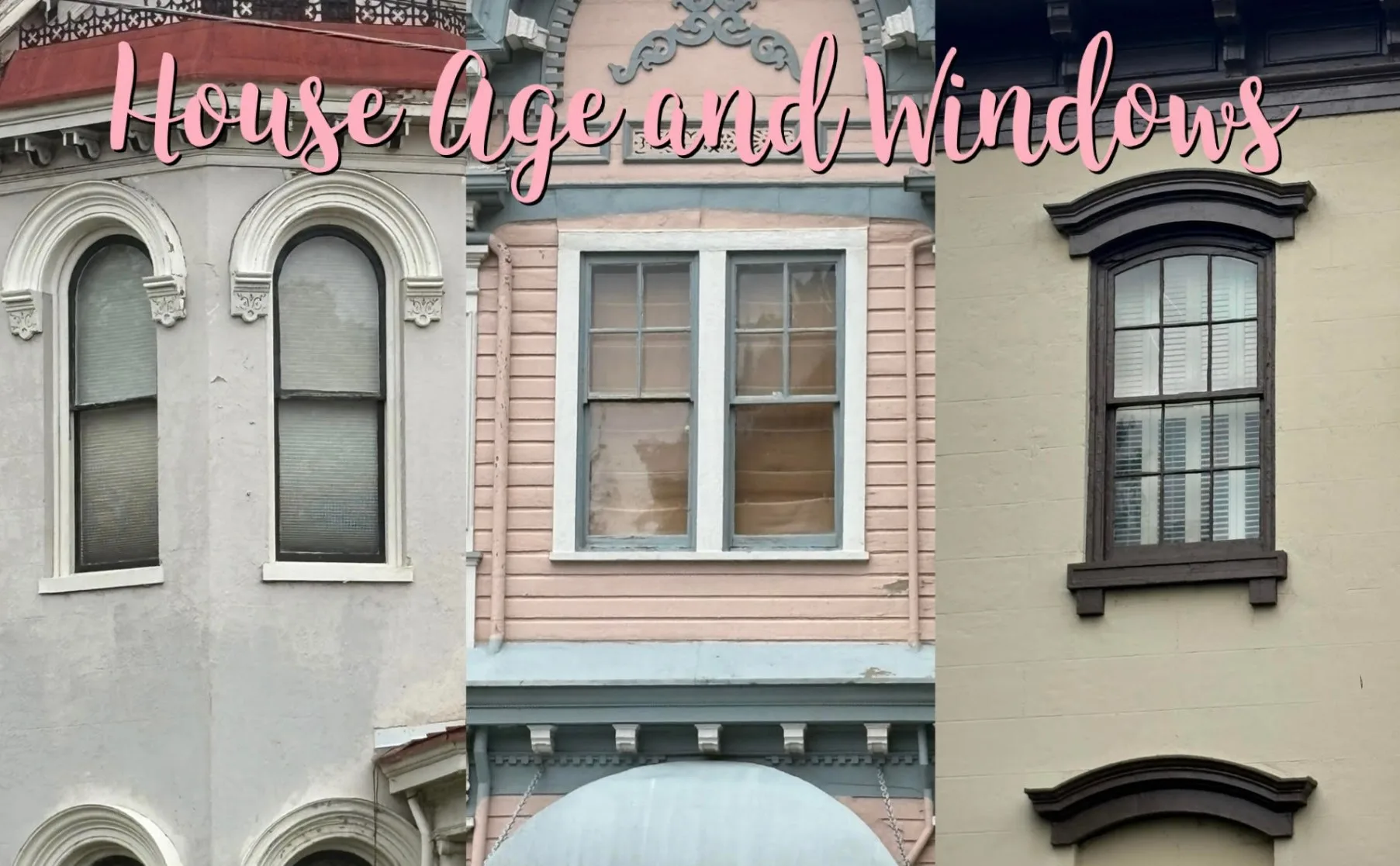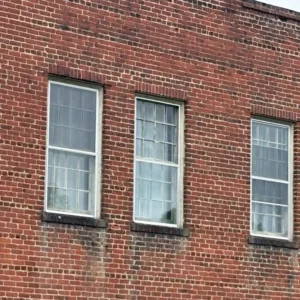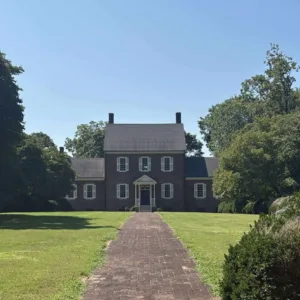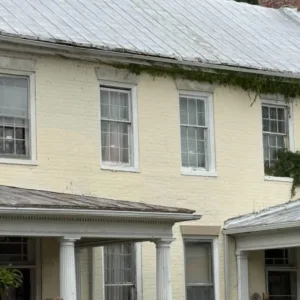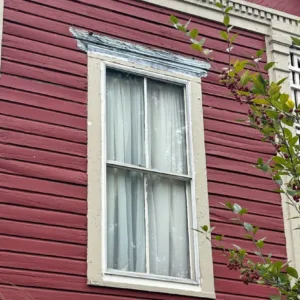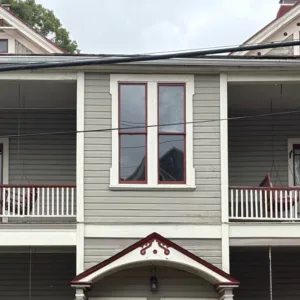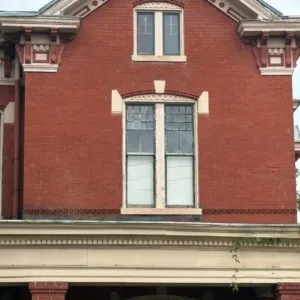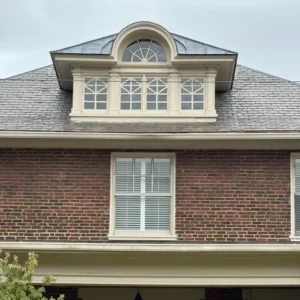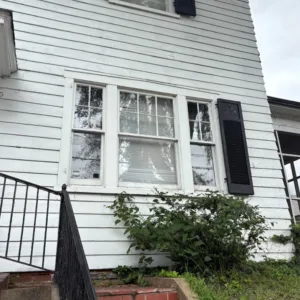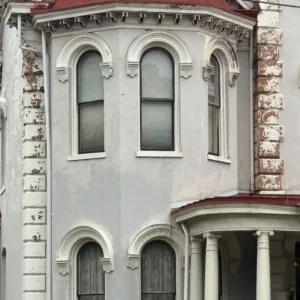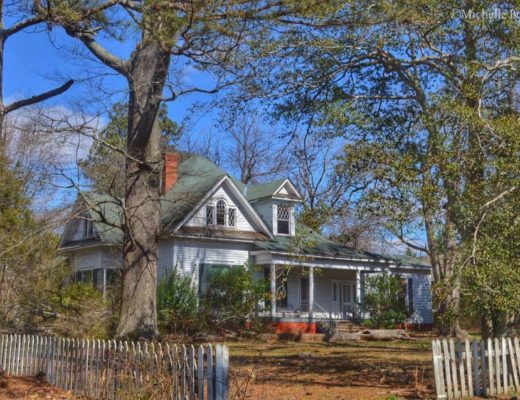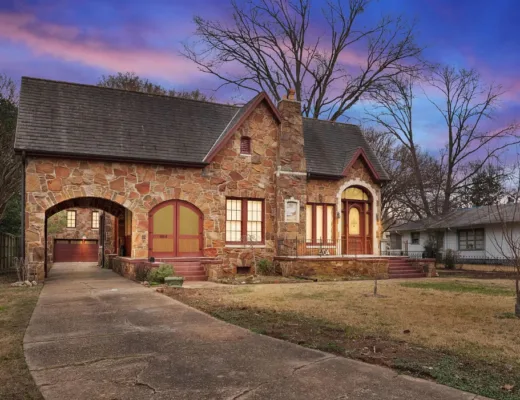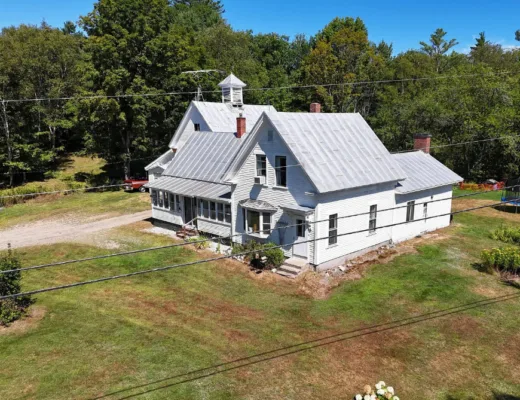Windows are like the eyes of a house. And just like how you can sometimes guess a person’s age from the look in their eyes, you can do the same with a home. If you know what to look for, windows can tell you a lot about when a house was built–long before you dig into deeds or records.
Back in the day, glass was harder to make and more expensive, so window styles changed as technology improved. The number of panes, the shape of the sash, and even the little imperfections in the glass can all give away a home’s age.
Count the Panes
Before large sheets of glass were possible, windows were made from lots of small panes separated by muntins(those thin wooden pieces). The older the house, the smaller and more numerous the panes were.
- 12-over-12 – Common in the 1700s, Colonial and Georgian homes. It was hard to produce large sheets of glass.
- 9-over-9 – Seen in the 1700s and early 1800s, often in Federal-style homes.
- 6-over-9 or 9-over-6 – This one is a little unusual, but found in Federal to early Greek Revival houses.
- 6-over-6 – The classic! Found from the late 1700s through the mid-1800s. Federal, Greek Revival, and early Victorian homes used this style heavily.
- 4-over-4 – Popular in the early to mid-1800s, especially in Greek Revival houses. Panes were getting bigger as glassmaking improved.
- 2-over-2 – Big glass, minimal muntins. A hallmark of the mid-to late 1800s(Italianate, Queen Anne). Often paired with tall, narrow window openings.
- 1-over-1 – By the late 1800s, glass could be made large enough that each sash only needed one pane. Super common in Victorian houses, early 1900s foursquares, and farmhouses.
- Multi-over-1 – A revival look! Popular in Craftsman bungalows and Colonial Revival homes of the early 1900s. Multi-paned uppers gave a “handcrafted” look, with big, light-filled lower panes.
- Picture Windows – A post-World War II invention, especially popular in Ranch and Mid-century Modern houses. Often paired with wide, horizontal sliders.
Look at the Glass Itself
Glass has its own way of giving up secrets:
- Wavy or bubbly glass – Handmade, pre-1900.
- Smooth but a little warped – Early machine-made glass from the late 1800s to early 1900s.
- Perfectly flat – That’s modern float glass, common from the mid-20th century on.
Pay Attention to Shape and Proportion
- Tall and skinny – Federal and Greek Revival(late 1700s-1840s).
- Rounded or arched tops – Italianate(mid to late 1800s).
- Stained or leaded glass in the upper sash – Queen Anne(1880s-1910s).
- Groups of casement windows – Craftsman bungalows(1900s-1930s).
- Wide and horizontal – Ranch and Mid-century Modern.
Check the Frames
- Hand-planed wood with pegs – Pre-1850 craftsmanship. Look for irregular ripples from hand tools and wooden pegs instead of nails.
- Machine-milled wood – Mid to late 1800s. Perfectly uniform boards, smooth finishes, and circular saw marks.
- Metal frames – Popular from the 1920s to the 1950s.
- Vinyl – A 1960s invention that took off in the 80s and 90s.
Don’t Forget Replacements
Many old houses have had their windows replaced—sometimes to match the original style, sometimes not at all. If the frames and glass look too new, they probably are. However, the openings themselves are often original, and their size and shape can still indicate the home’s true age.
If you know how to read them, windows are like a time machine. They tell the story of technology, style, and craftsmanship from the day the house was built. Next time you’re out admiring old homes, take a second to look at the windows. You might just be able to guess its age!

